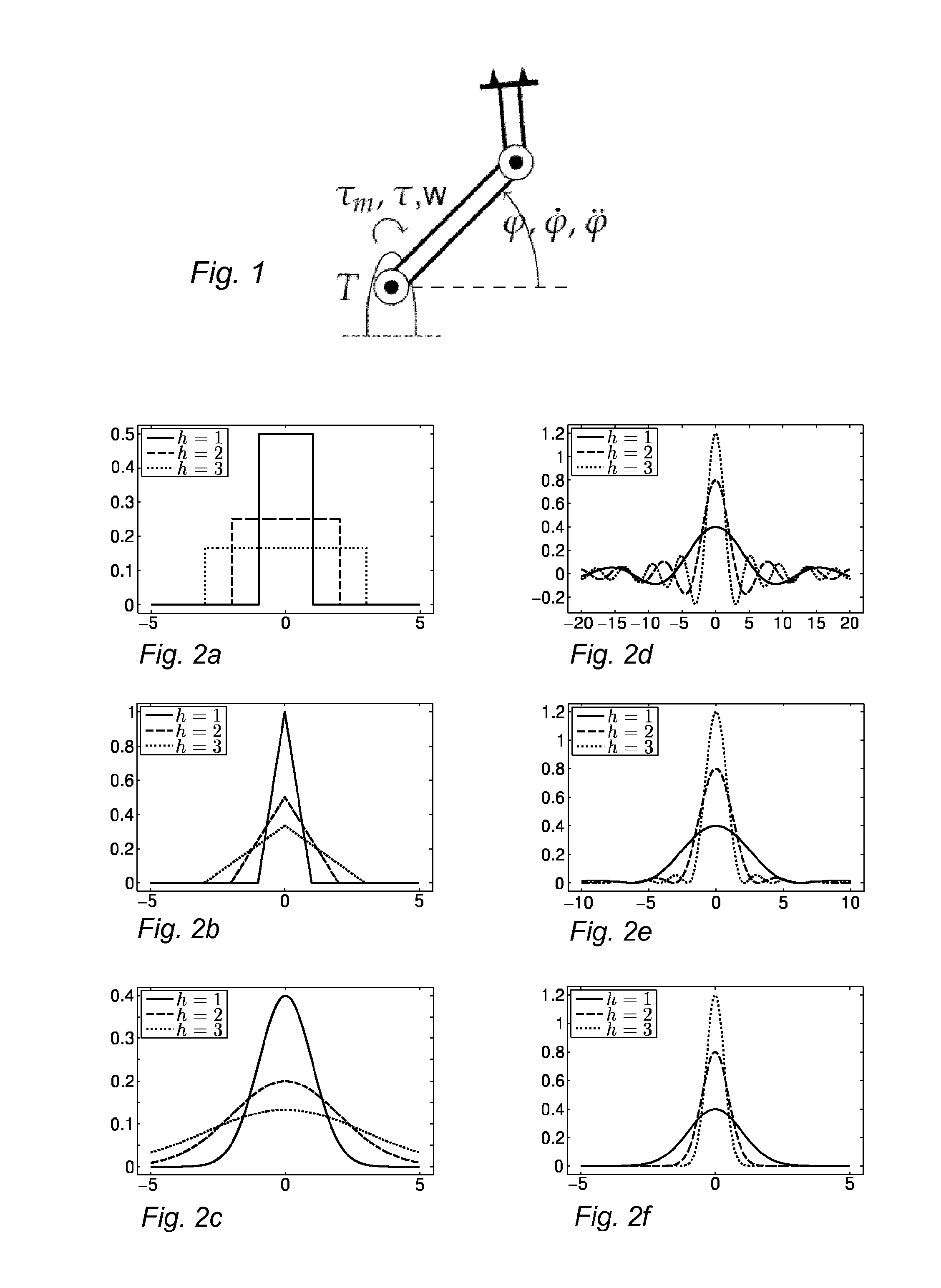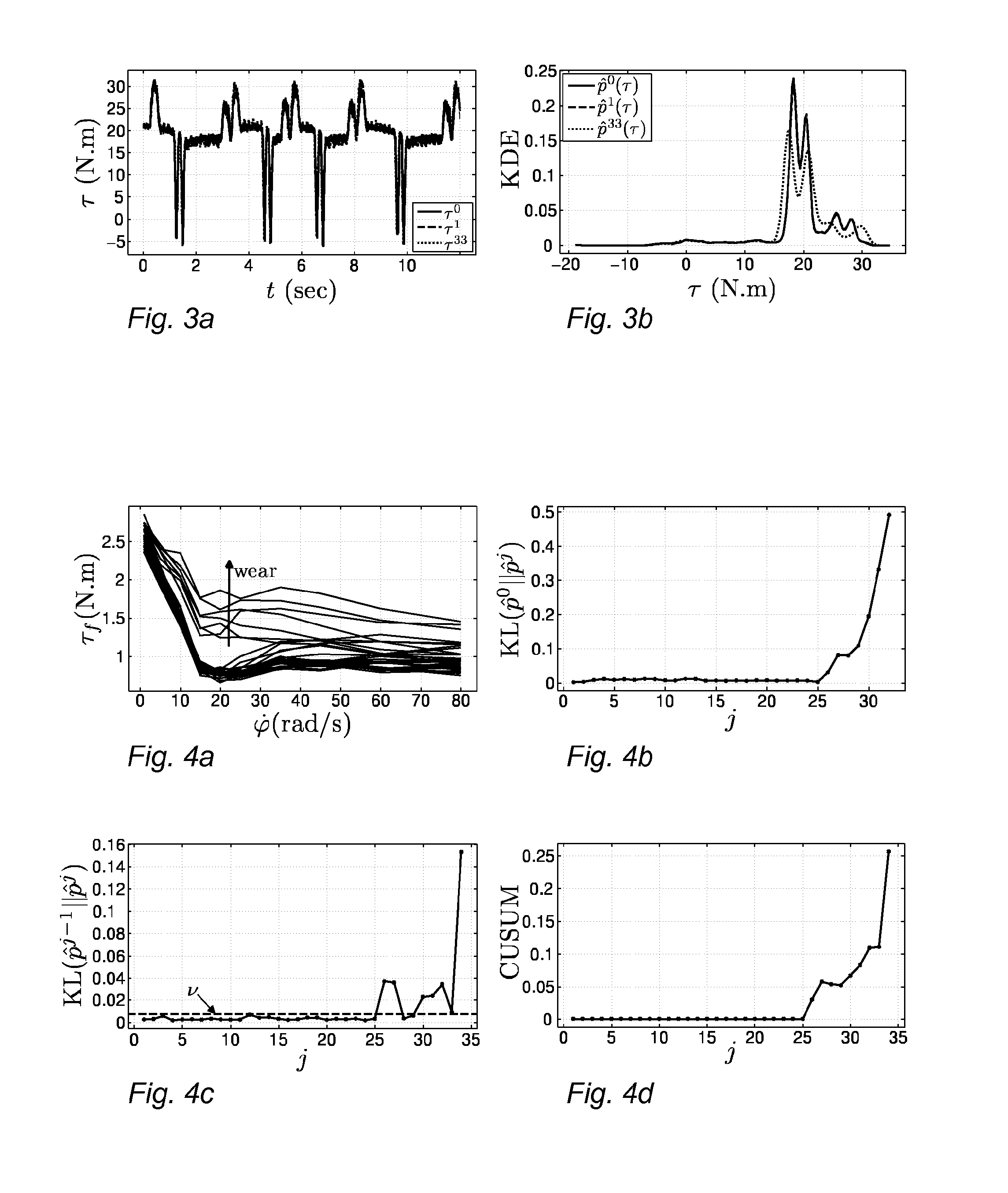Condition Monitoring Of An Industrial Robot
a robot and condition monitoring technology, applied in the direction of mechanical roughness/irregularity measurement, program control, instruments, etc., can solve the problems of high maintenance cost, difficult to construct an accurate friction model which can describe the effects of speed, load, temperature and wear, and high maintenance cost. , to achieve the effect of reducing impact and strong impa
- Summary
- Abstract
- Description
- Claims
- Application Information
AI Technical Summary
Benefits of technology
Problems solved by technology
Method used
Image
Examples
Embodiment Construction
[0027]Referring to FIG. 1, an industrial robot can be described as a multi body dynamic mechanism by
τ=M(φ){umlaut over (φ)}+C(φ,{umlaut over (φ)})+Dφ+τg(φ)+τs(φ)+τf ({dot over (φ)}, τm, T, w), (1)
where τ is torque at a robot joint, φ is an angular joint position of the robot joint, M(φ) is an inertia vector, C(φ,{dot over (φ)}) relates to speed dependent terms (e.g. Coriolis and centrifugal), D is a damping vector, τg(φ) is a gravity-induced torque, τs(φ) is a nonlinear stiffness. The function τf({dot over (φ)}, τm, T, w) contains the joint friction components and is dependent on joint speed {dot over (φ)}, the load torque τm caused by the manipulated load, the joint temperature T and the wear level w.
[0028]The deterministic input of interest is the wear level w, which is zero when the robot is new and increases with time / usage. When the wear level w exceeds a predetermined threshold value, it is considered as a fault. Since from equation (1) it is obvious that the torque T is aff...
PUM
| Property | Measurement | Unit |
|---|---|---|
| torque | aaaaa | aaaaa |
| kernel density estimators | aaaaa | aaaaa |
| distance | aaaaa | aaaaa |
Abstract
Description
Claims
Application Information
 Login to View More
Login to View More - R&D
- Intellectual Property
- Life Sciences
- Materials
- Tech Scout
- Unparalleled Data Quality
- Higher Quality Content
- 60% Fewer Hallucinations
Browse by: Latest US Patents, China's latest patents, Technical Efficacy Thesaurus, Application Domain, Technology Topic, Popular Technical Reports.
© 2025 PatSnap. All rights reserved.Legal|Privacy policy|Modern Slavery Act Transparency Statement|Sitemap|About US| Contact US: help@patsnap.com



